Which is the better way to get your soil ready for a successful garden season – tilling or plowing? It’s the age-old debate that has been going on for centuries amongst farmers. While it may seem like splitting hairs, there are actually a few key differences between tilling and plowing that may make a world of difference in your soil preparation process. To get to the bottom of this great debate, take a closer look at what each process entails and how it can impact your garden’s success.
What Is Soil Tilling?
Soil tilling is the process of digging up and breaking apart soil, usually done with a tool like a plow or a rototiller. It can be used to turn over existing soil for planting, as well as to loosen compacted soil so that air, water, and nutrients can more easily reach plant roots. Soil tilling also helps break down weeds and reduces compaction from foot traffic.
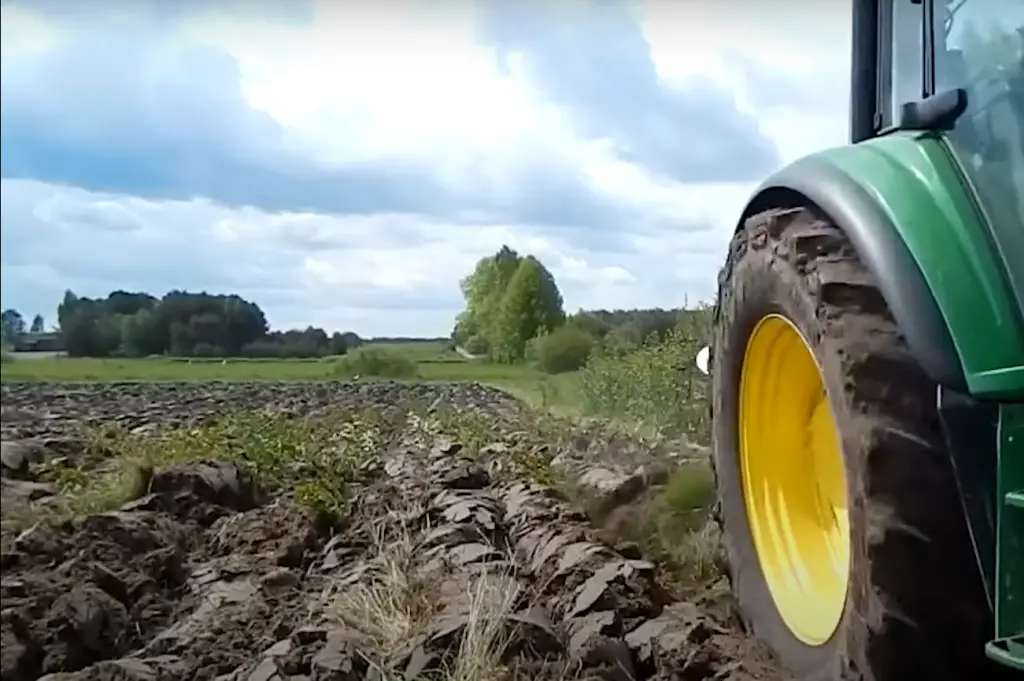
The goal of soil tilling is to create an ideal environment for plants to grow in. It’s important to note that too much tilling can actually damage the soil, leading to erosion and nutrient runoff. It’s best practice to only till the top few inches of soil at any given time. When necessary, it’s best to use the least aggressive tilling method possible to avoid disrupting the soil too much. For example, plowing can be more aggressive than rototiller as it turns up a deeper layer of soil. As such, it should only be used if absolutely necessary and in moderation.
Soil tilling is a key element of any successful gardening or farming project. It helps create an environment that allows plants to grow healthy and strong while protecting against weeds and compaction problems. Whether you’re tackling a big garden project or just planting a few rows of vegetables, having good-quality soil is essential for success. Soil tilling is one way to make sure your soil is in the best condition possible before getting started.
Be sure to consult your local extension office or agricultural experts if you have questions about the best type of soil tilling method for your specific project. With the right approach, you can ensure that your plants are growing in a healthy and productive environment [1].
What Is Soil Plowing?
Soil plowing is a soil-preparation technique used to loosen and break up the soil in fields, gardens, and other growing areas. It involves using a machine such as a tractor with an attached plow blade or tiller to cut through sod and turn over soils.
It also helps reduce weed growth by burying weed seeds deeper within the soil.In addition to traditional plowing methods, some modern no-till farming techniques use chemical herbicides instead of mechanical tillage to control weeds without disturbing the soil surface. This helps reduce erosion and runoff and can increase the carbon content of the soil. Regardless of the method used, soil plowing is a key part of successful crop yields, as it helps create fertile, healthy soils that allow plants to thrive.

Soil plowing is important for several reasons. First, it helps improve aeration in the soil by loosening compaction and creating air pockets. This allows water and nutrients to reach plant roots more quickly and easily, helping ensure healthy growth. Additionally, regular plowing also prevents weed growth by burying weed seeds deep within the soil instead of allowing them to remain on or near the surface. By breaking up clay-like soils into smaller particles that are easier for roots to penetrate, plowing can also help promote faster and healthier root growth.
Finally, regular soil plowing helps maintain soil fertility by mixing organic material into the topsoil layer. This adds vital nutrients like nitrogen and phosphorus to the soil, which can help ensure strong yields for farmers and gardeners alike. Ultimately, soil plowing is essential for creating fertile soils that allow crops to thrive and produce strong yields year after year [2].
Difference In Tilling Vs Plowing
Tilling and plowing are two of the primary agricultural practices used to prepare a soil bed for planting. They both involve breaking up the topsoil layer, but there is a distinct difference between the two.
Tilling is used to completely break up an area of soil, making it easier to level and pull out weeds. Tilling can range from using a rototiller or hoe to loosen the soil on smaller plots of land, all the way to large-scale tractors equipped with specialized tines to work large areas quickly.

Plowing, on the other hand, is more specifically used to turn over soil in preparation for planting. Plowing typically involves dragging a sharp blade through the dirt in order to create troughs and furrows that can be filled with fertilizer and seed.
The main difference between tilling and plowing is the purpose of each practice. Tilling is used to break up soil for easier leveling, weeding, and planting preparation while plowing is more specifically used to turn over soil to ready it for planting. Additionally, tilling requires less specialized equipment than plowing does, making it a better choice for smaller plots of land. It’s important to note, however, that both practices should be done carefully so as not to cause damage or compaction in the soil structure.
The proper use of tilling and plowing can improve soil fertility, reduce weed pressure, prepare an ideal seedbed, increase yields, and help conserve moisture in the soil. The decision between tilling or plowing ultimately depends on what type of crops are being planted and what type of equipment is available to manage the land. Depending on these factors, one may be more suitable than another for your specific situation.
8 Ways to Improve Garden Soil
Add Compost
Adding compost is one of the best ways to improve garden soil. Compost adds important nutrients to the soil and helps increase water retention. It can also help reduce weed growth and improve aeration. Compost should be added every season or two, depending on how much nutrient depletion has occurred in the soil.
Add Manure
Manure can provide an excellent source of organic matter for your garden soil. Manure contains essential nutrients like nitrogen, phosphorus, and potassium that plants need to grow healthy and strong.
Introduce Organic Material
Organic materials like straw, leaves, grass clippings, and mulch can be used to improve soil structure. This type of organic matter will help increase water retention and reduce compaction in the soil. It also helps to add nutrients back into the soil as it breaks down over time.
Improve Aeration
Soil that is compacted or heavily packed can benefit from aeration. Adding a layer of sand or grit to the surface of your garden bed can help improve drainage while still allowing oxygen to reach plant roots.
Test Soil pH Levels
Gardeners should test their soil’s pH levels every few years to ensure proper balance for healthy growth.
If your soil is too acidic, adding lime can help raise the pH levels; if it’s too alkaline, adding sulfur can help reduce them.Use Cover Crops
Cover crops are an excellent way to introduce organic matter into your garden soil and improve its overall health.
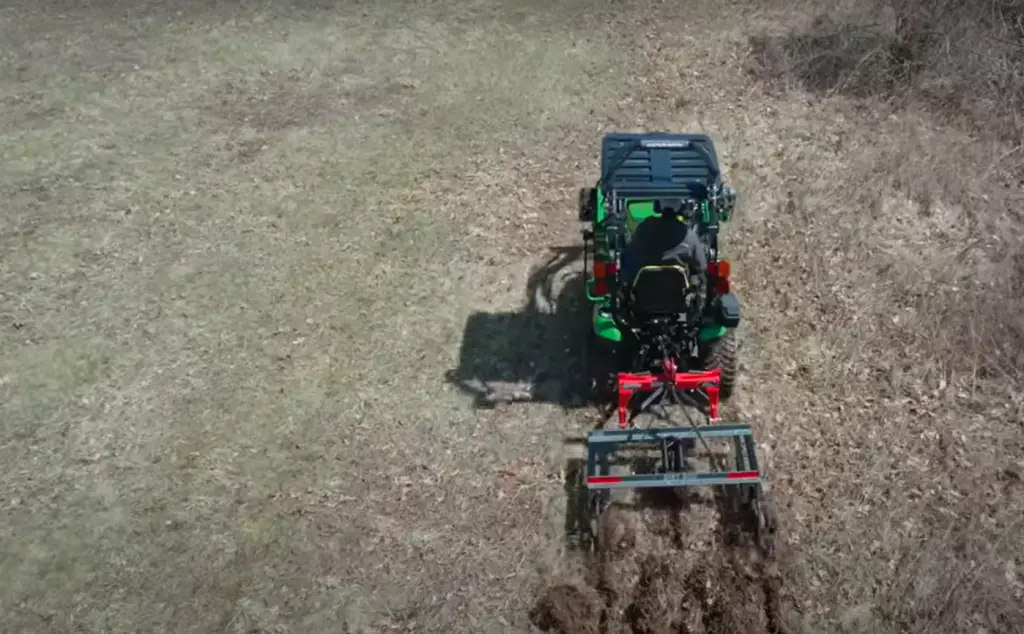
Cover cropping involves planting a crop that will protect and nourish the soil while providing additional benefits like reducing erosion or suppressing weeds. Winter rye, buckwheat, clover, and alfalfa are all popular cover crops for gardens.
Rotate Crops
Crop rotation helps reduce pest problems in the garden by preventing certain pests from becoming overly adapted to one type of crop. It also helps improve soil fertility by introducing different nutrients each season, reducing the need for fertilizers. Rotating crops every season is a great way to maintain healthy garden soil over time.
Prevent Soil Compaction
Soil compaction can be a major issue in gardens, as it limits the ability of oxygen and water to get to the roots of plants. Compaction can also reduce drainage and make it difficult for certain nutrient-rich organic materials like compost or manure to penetrate the soil. To prevent soil compaction, avoid walking on beds when they’re wet or overly saturated with water. Additionally, use raised beds with pathways instead of walkways when possible [3].
What to plant in tilled soil?
Tilled soil is a great starting point for growing a variety of plants. Annuals, perennials, vegetables, fruits, and herbs all thrive in tilled soil that has been properly prepared.
Annuals are plants that complete their life cycle in one year or less. These include flowers such as marigolds, petunias, and impatiens, and vegetables like tomatoes, peppers, and squash. Perennials are plants that last longer than two years; they don’t need to be replanted each season. Popular perennial options include daylilies, hostas, and peonies.
Vegetables such as lettuce, broccoli, and cauliflower can also be grown in tilled soil as long as it’s well-fertilized and has good drainage. Fruits like strawberries, raspberries, and blueberries are also suitable for this type of soil. Herbs such as mint, basil, and oregano can be grown in tilled soil as well.

No matter what you choose to plant in your tilled soil, it’s important to make sure the soil is well-prepared before planting anything. Add organic matter to the soil and mix it in thoroughly to improve its texture and fertility. Test the pH level of the soil to determine if any amendments need to be made before planting. Finally, ensure that the area is properly drained so that your plants don’t become waterlogged or rot from too much moisture. With a little preparation up front, you can create a thriving garden in tilled soil.
FAQ
What is tilling and plowing?
Tilling and plowing are two important agricultural practices used to prepare the soil for planting. Tilling is the process of breaking up the soil, removing weeds, aerating it, and bringing nutrients closer to the surface. Plowing is used to create furrows in the soil so that seeds can be planted in straight rows. Both tilling and plowing help improve drainage and encourage healthy root growth while providing a suitable environment for plants to thrive. These two processes work together to ensure that farmers get maximum yield from their crops.
What is the difference between tilling and cultivating?
Tilling and cultivating are similar in that they both break up the soil, but there are some key differences between them. Tilling is usually done with a tractor-drawn implement such as a rototiller. This process completely breaks up the soil and removes any weeds or debris. Cultivating is done with a hand tool such as a hoe, rake, or plowshare. It partially breaks up the soil to remove weeds without disturbing existing plant roots and topsoil too much.
What are the benefits of tilling and plowing?
The main benefit of tilling and plowing is improved soil health. By breaking up the soil, aerating it, removing weeds, and bringing nutrients to the surface, tilling helps create a fertile environment for plants to grow. Plowing also helps improve drainage and allows for better water retention in the soil, which can be beneficial during times of drought. In addition, these practices help keep the soil loose and prevent compaction, allowing roots to spread out and absorb more nutrients. Finally, tilling and plowing create straight rows in which seeds can easily be planted and harvested. This makes farming more efficient and increases yield potential.
What are some of the drawbacks of tilling?
One of the main drawbacks of tilling is that it can disrupt existing beneficial microorganisms in the soil. Tilling can also cause erosion if done on steep slopes or on soils with poor structure. Additionally, tilling removes crop residue from the surface, which can lead to increased weed growth. Finally, tilling can be labor-intensive and expensive if done with a tractor-drawn implement.
What is no-till farming?
No-till farming is an agricultural method that eliminates or greatly reduces tillage on farmland to conserve soil structure, reduce labor costs, and improve yield potential. Instead of using a rototiller or plowshare to break up the soil, no-till farmers use cover crops to suppress weeds and build organic matter in the soil.
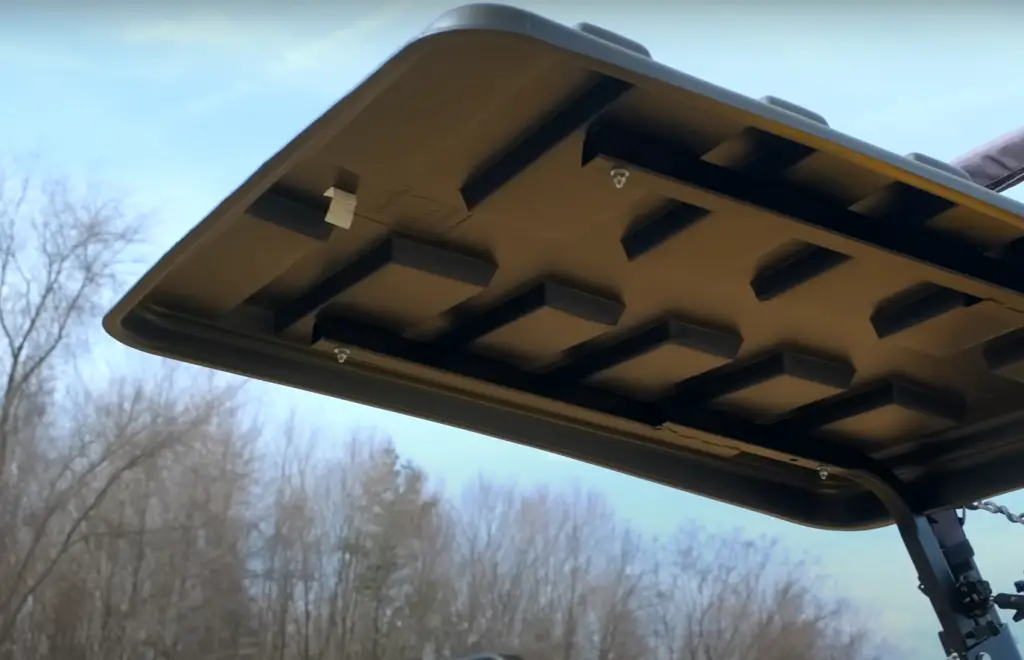
This helps create a healthy environment for plants by preserving beneficial microorganisms and improving water retention in the soil. Additionally, no-till farming requires less fuel and energy than traditional tilling methods, making it a more eco-friendly farming practice.
What are the benefits of no-till farming?
No-till farming has many benefits. Eliminating or reducing tillage on farmland helps conserve soil structure and reduce erosion. It also requires less energy and labor than traditional tilling methods, which can save farmers money in the long run. Additionally, no-till farming helps build organic matter in the soil, improve water retention, and increase yield potential. Finally, it is more eco-friendly than traditional tilling methods since it reduces fuel consumption and greenhouse gas emissions.
How long does garden soil last?
The longevity of garden soil depends on the type of soil and how it is managed. In general, well-managed garden soils can last many years. Healthy soil should have a balance of organic matter, minerals, microorganisms, water retention, and air spaces. Proper maintenance such as adding compost or organic matter and avoiding compaction will help extend the life of your garden soil. Additionally, planting cover crops during winter months can help increase fertility and reduce erosion. With good management practices, garden soils can last for decades or more.
How do you maintain high-quality soil?
High-quality soil can be maintained with proper management practices. Adding compost or organic matter helps improve water retention, aeration, and fertility. Cover crops should also be planted during winter months to help reduce erosion and add nutrients to the soil. Additionally, avoid compaction by using mulch or a layer of cardboard around plants and pathways. Finally, rotating crops each season can help keep soils from becoming depleted over time. With these simple steps, you can maintain healthy soil for years to come.
How do I add nutrients to my garden soil?
Adding nutrients to your garden soil can be accomplished by adding organic matter such as compost, manure, or cover crops. These materials will add beneficial microorganisms and organic matter to the soil, which will help improve fertility and water retention. Additionally, mixing in mineral amendments such as limestone or gypsum can help balance soil pH levels and provide essential trace minerals for plants. Finally, applying fertilizer directly to the soil can also help add additional nutrients. With these practices, you can ensure that your garden has the necessary nutrients it needs to thrive.
How do you keep soil from drying out?
Keeping soil from drying out can be done by incorporating organic matter such as compost or mulch into the soil. Organic matter helps improve water retention and reduces evaporation, which helps keep the soil moist. Additionally, covering areas of bare soil with mulch can help prevent moisture loss due to evaporation. Finally, watering deeply regularly will also help ensure that the soil stays hydrated and does not dry out. With these practices, you can keep your garden’s soils healthy and well-moisturized.
What is cover cropping?
Cover cropping is an agricultural practice in which a crop is planted between two other crops to protect and improve soil quality. Cover crops add nutrients to the soil, reduce erosion, improve water retention, and increase soil organic matter. Additionally, they can help suppress weeds and provide habitat for beneficial insects. Cover crops come in a variety of types such as legumes, grasses, and grains that can be planted during different times of year depending on the climate. With cover cropping, you can create a healthier environment for your plants while also improving soil health.
How to choose the right cover crop?
Choosing the right cover crop for your garden depends on several factors such as climate, soil type, and desired outcome. Different cover crops have different benefits such as nitrogen-fixing legumes or deep-rooted grasses that can help reduce erosion. Additionally, some cover crops are better suited to certain climates than others, so it’s important to consider where you live before selecting a cover crop. Finally, it is also important to think about the desired outcome of planting a cover crop – do you want to suppress weeds or improve water retention? Answering these questions will help you choose the best possible cover crop for your garden.
Why do you need to till a garden?
Tilling a garden is important for several reasons. Tilling helps break up compacted soil, which improves water drainage and aeration. Additionally, it can help reduce weed growth by disrupting the root systems of weeds and exposing them to air and sunlight. Finally, tilling can also help improve fertility by mixing organic matter into the soil. With these benefits in mind, it’s important to remember that tilling should be done in moderation – over-tilling can lead to compaction and increased soil erosion. With a proper balance of tilling and other management practices, you can maintain healthy garden soils for years to come.
Useful Video: Plowing vs Tilling – Which one is better for the soil?
Conclusion
The difference between tilling and plowing are both essential to successful crop production. Tillage is used to prepare a seedbed for planting, manage weeds, and control erosion while plowing is mainly used to break up soil compaction and turn over large amounts of organic material into the soil. Both methods can be used together or separately depending on the needs of the landowner or farmer. While both techniques have their advantages and disadvantages, they are necessary components in achieving optimal yields and healthy soils. With careful planning and consideration of environmental factors, farmers can make sure they use these tools appropriately so that their crops will thrive for years to come.
References:
- https://www.ers.usda.gov/topics/farm-practices-management/crop-livestock-practices/soil-tillage-and-crop-rotation/
- https://www.forigo.it/en/news/what-is-plowing
- https://growagoodlife.com/improve-garden-soil/





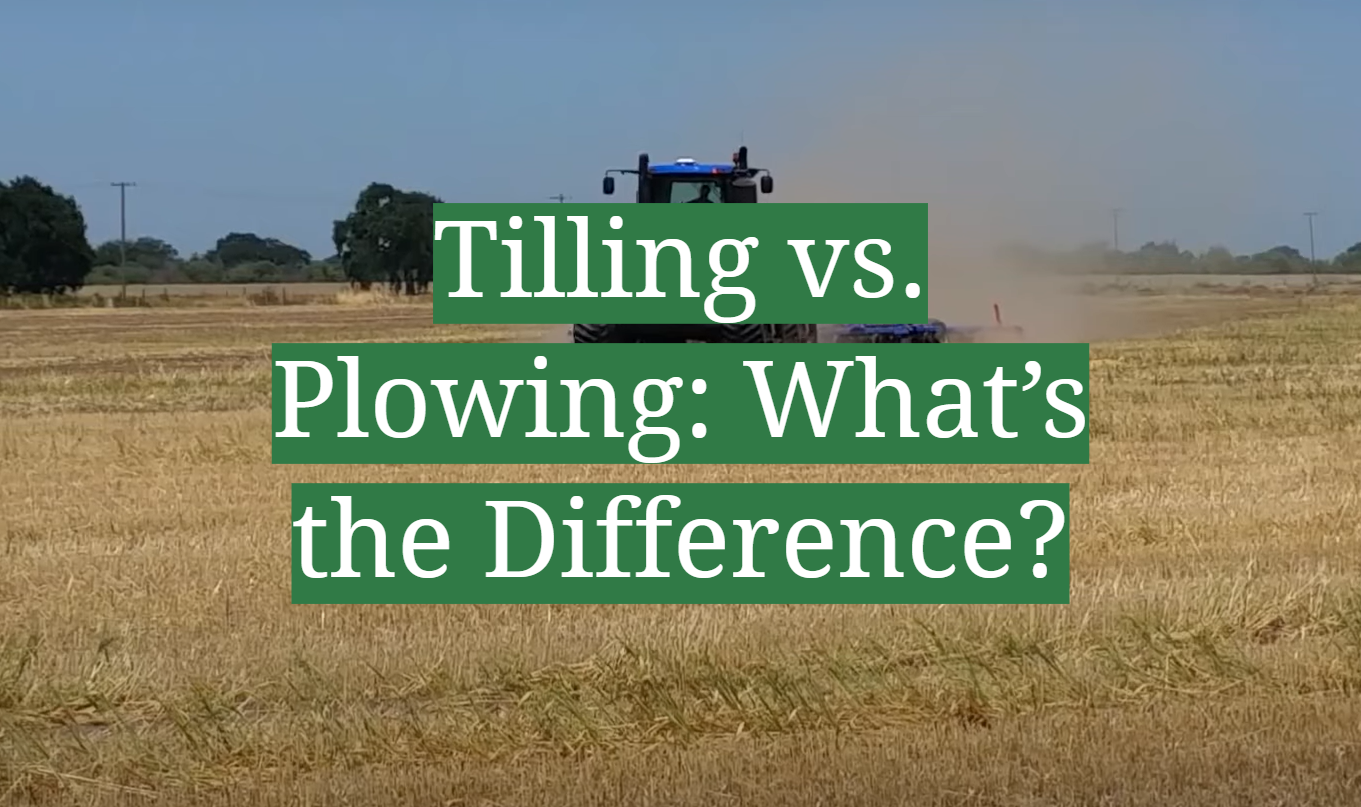
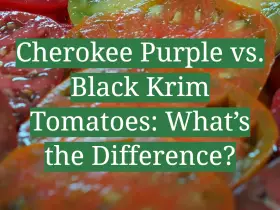
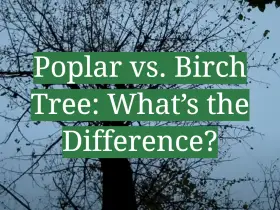


Leave a Reply
View Comments